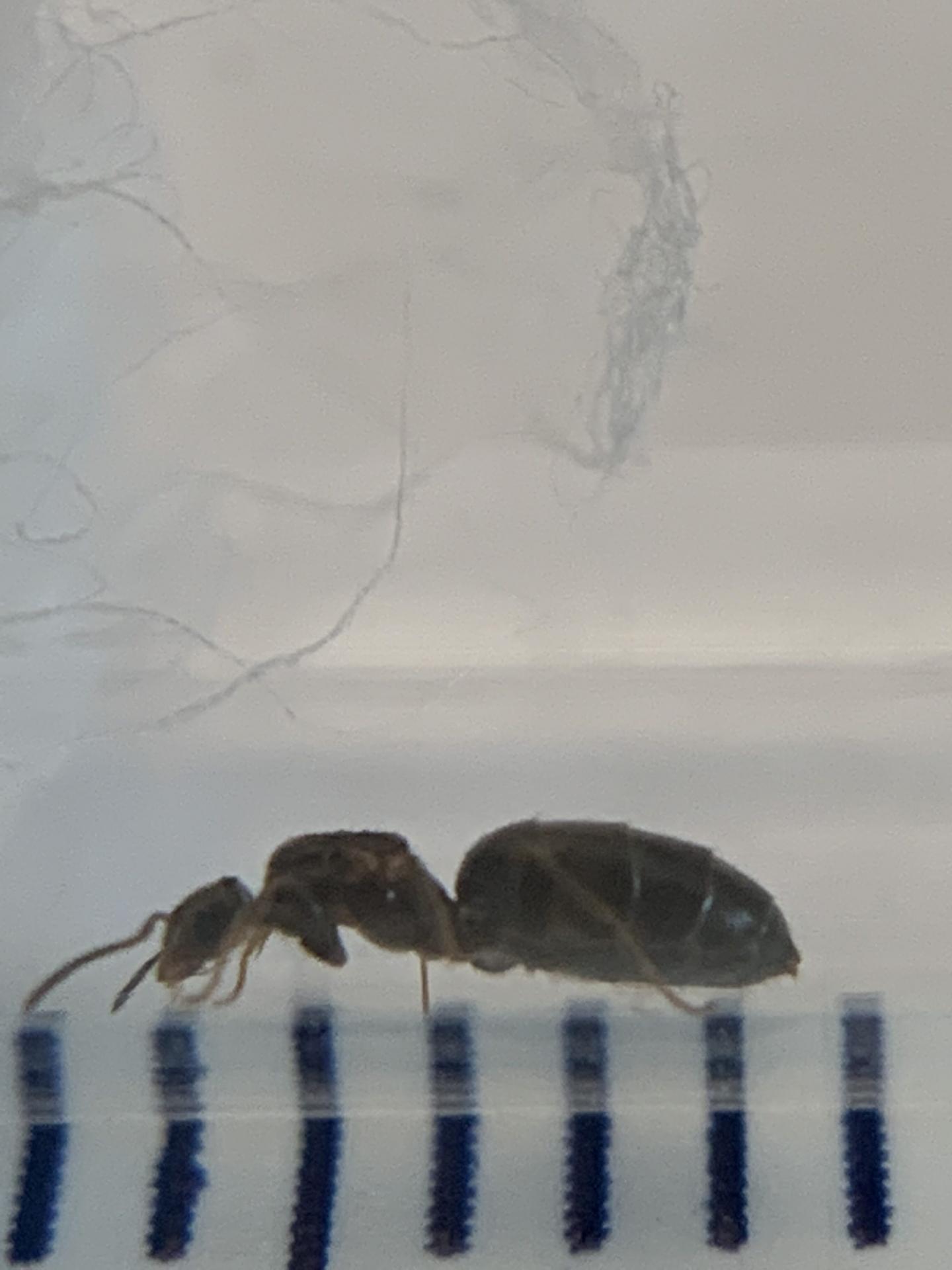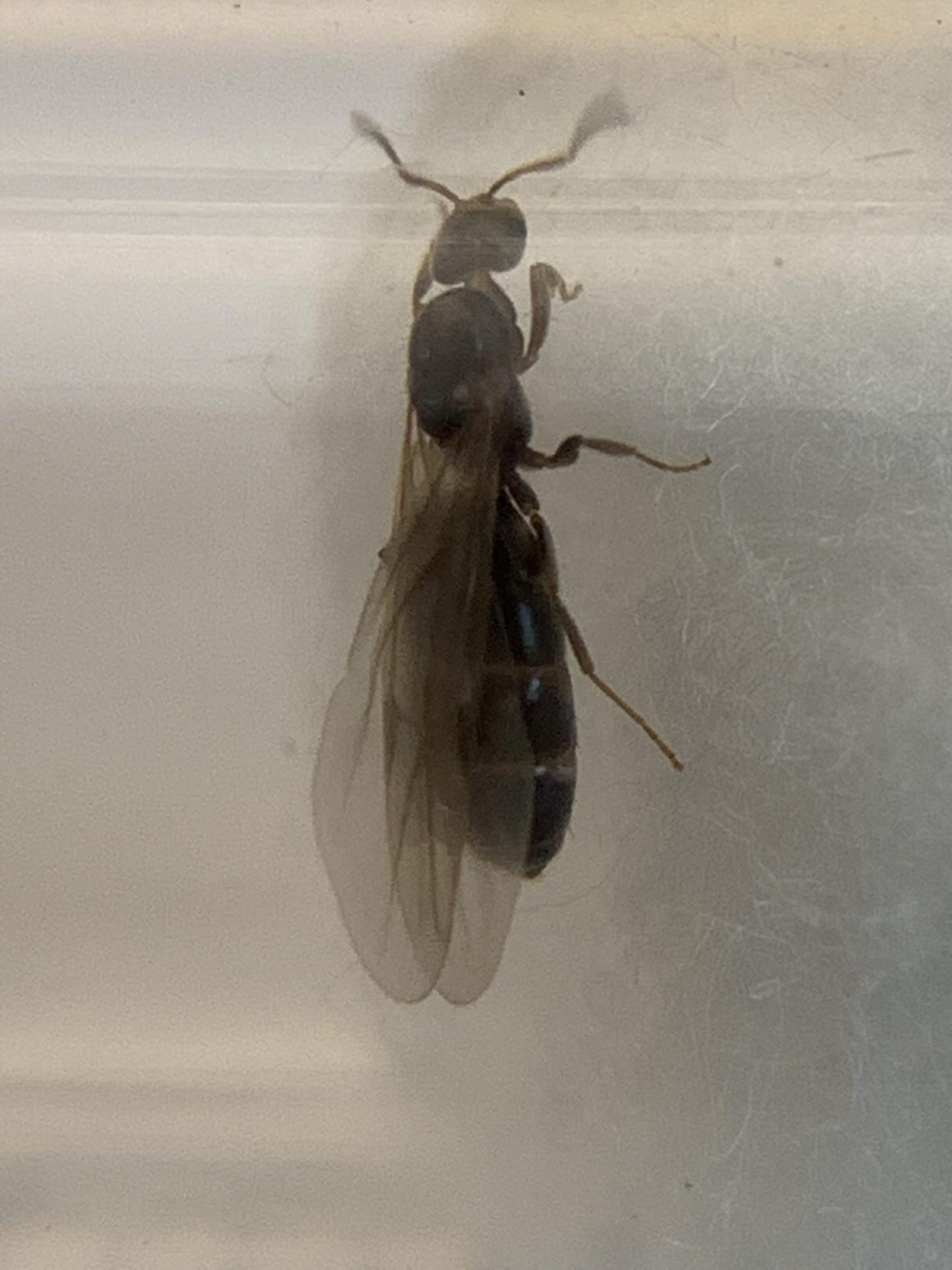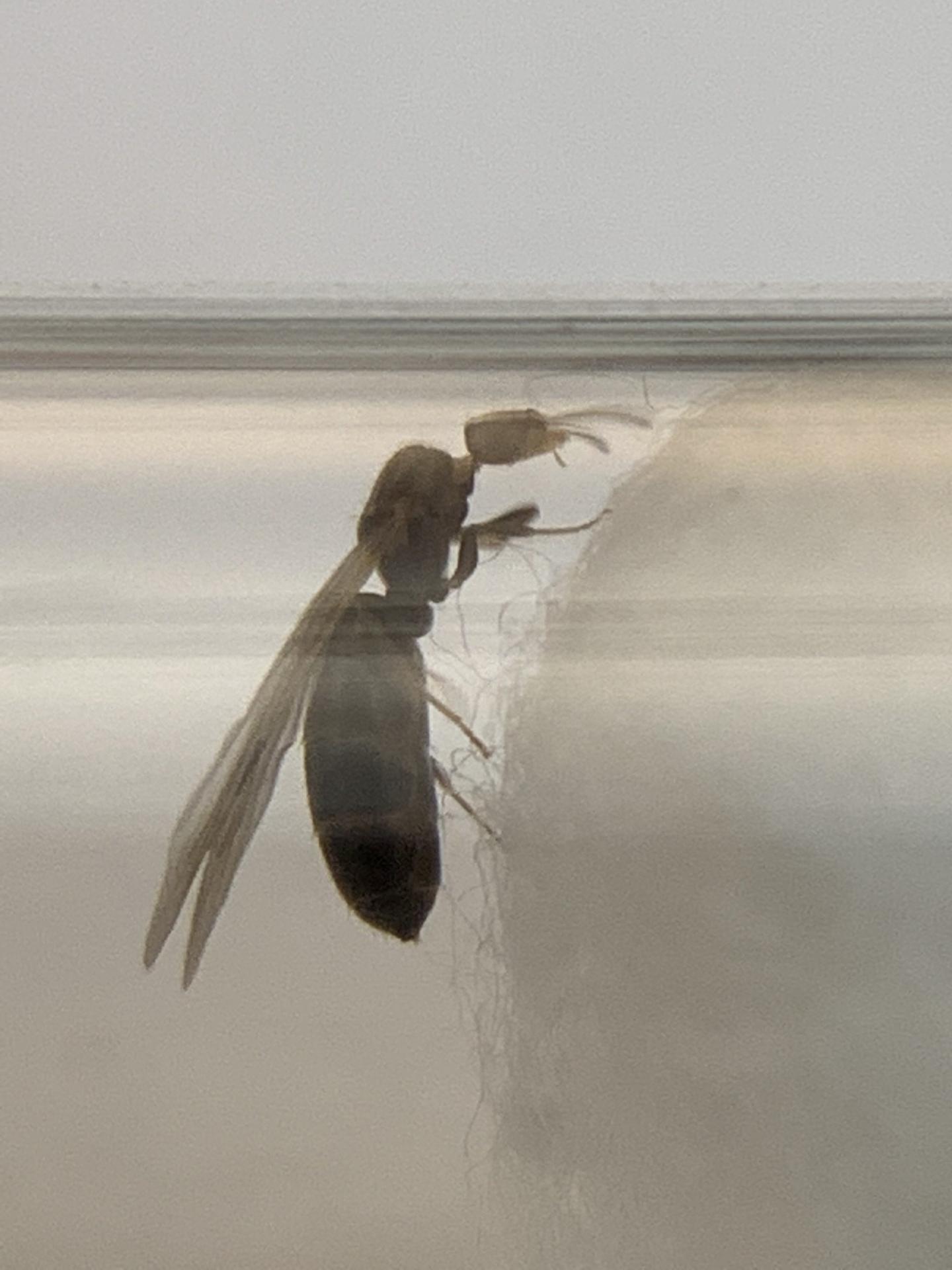1. Location (on a map) of collection: South side of Tucson, Intersection of Headley and West Bothell Way
2. Date of collection: 7/29/20
3. Habitat of collection: blacklighting with LED, mercury vapor and fluorescent
4. Length (from head to gaster): 4.5mm
5. Color, hue, pattern and texture: all black but lighter at the joints
6. Distinguishing characteristics: more attracted to the LED blacklight than MV or fluorescent
7. Distinguishing behavior: none noted
8. Nest description: unknown
9. Nuptial flight time and date: 7/29/20






















